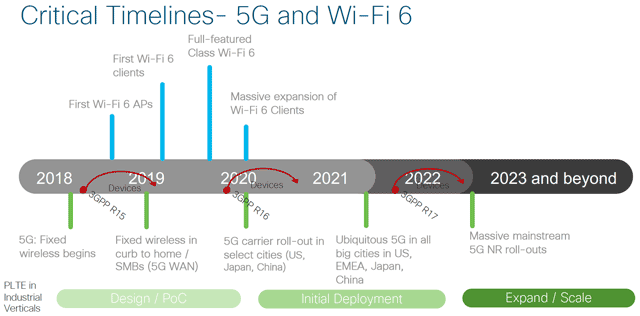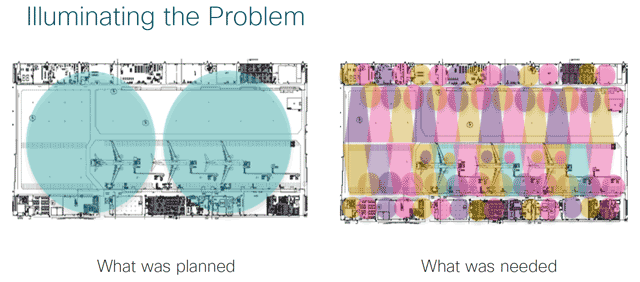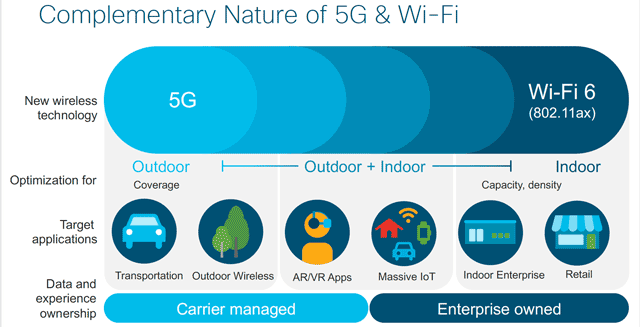Much has been made of the potential applications of 5G wireless networks in industry, but there is also an alternative in the shape of Wi-Fi 6. David Fowler reports
5G mobile phone and wireless broadband networks were launched in the UK earlier this year, and the coverage and number of networks has been expanding since then. Meanwhile, there has been much hype about the potential of 5G for industry. So what will it mean?
Dritan Kaleshi, head of technology (5G) at digital technology innovation centre Digital Catapult, says that 5G offers data speeds 10 to 100 times greater than 4G, but speed is not the main point. More important is that 5G will allow data volumes 1,000 times that of 4G and 10 to 100 times more connected devices in a given area. It will not only be an infrastructure solution for mobile services as 4G is today: it will also support many other services, notably for the industrial internet of things as well as services for factory automation (and, in transport, autonomous vehicles).
Manufacturing could be the number one opportunity in the UK by 2026, Mr Kaleshi says.
5G will allow remote maintenance, control and optimisation of factory systems on a wider scale, with seamless connections within and between organisations, and it will “turbocharge” artificial intelligence, robotics and the IoT by allowing them to work in concert, he says.
According to Stephen Goodman, an industrial solutions architect at Cisco, 5G does have the potential to dramatically change manufacturing – “but maybe not right now”, he adds.

5G will allow manufacturers to collect data from many more machines, but the challenge will be to refine it into usable information. Already clients are collecting a lot of data but not necessarily using it, he says.
However, he adds that wireless technology will change the face of manufacturing, by reducing the cost of adding a network point from anything between £500 and £3,500.
It will lower operational costs; provide the ability to “light up” difficult and remote locations; connect mobile assets and allow them to be tracked; and unlock productivity gains through making personnel more mobile.
Opportunities for wireless systems in factories include creating a mobile workforce with smart devices. They will allow experts to connect remotely into secure plant equipment and make possible tracking of workers as well as assets. Wireless sensors will simplify machine instrumentation. They will be used in applications such as autonomous guided vehicles, and physical security.
But installing wireless systems in factories presents difficulties compared with offices. The spaces are larger, and typically 6-10m high rather than 2.4m. Factories are constructed from different materials, often radio-reflective. There are many potential radio frequency interference sources such as rotating machines and welding, as well as large moving metallic objects. And sensitive industrial applications may rely on instant communication for safety and process control, for example if an emergency shutdown is needed.
Mr Goodman outlined an installation for a manufacturer of wide-bodied airliners, in which multiple radio transmitters were needed and, in the end, radio signals had to be bounced off the concrete floor to transmit them under the body of the aircraft.

Moreover organisations will have a choice between 5G and the latest iteration of Wi-Fi, Wi-Fi 6 (IEEE 802.11ax). This will also provide faster wireless speeds and better performance in environments with many devices. It is due to be formally launched late this year or early in 2020.
“I don’t see Wi-Fi connectivity being replaced soon in manufacturing,” says Goodman. He adds that the focus of 5G providers is currently on the consumer, with very little attention to the corporate market, and its deployment in industry will be slower than some predict.

He concludes: “We see 5G and Wi-Fi 6 as complementary.” He expects 5G to be used primarily outdoors for applications such as transport, outdoor wireless and augmented and virtual reality, managed by the 5G provider. Wi-Fi 6 will be used primarily indoors, for large scale IoT, and for indoor connections in business enterprises and in retail.
In short, he says, “Wireless is now strategic in driving factory evolution – but it’s not easy to deploy.” 5G and Wi-Fi 6 will be complementary. “5G will probably change the world,” Goodman concludes, “but not right away”.


